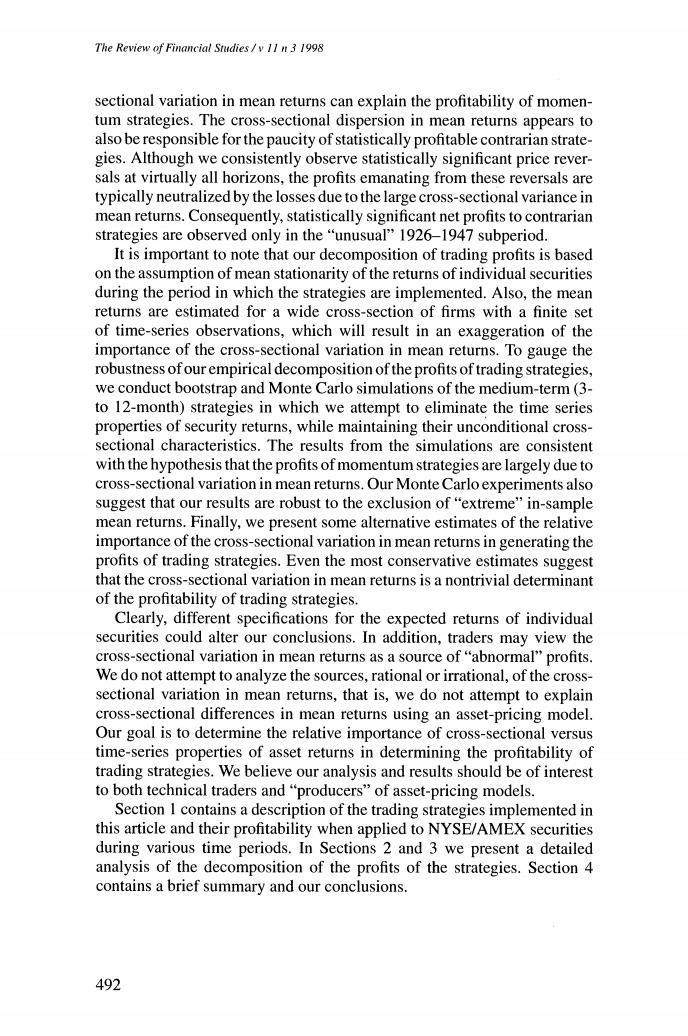正在加载图片...

The Review of Financial Studies /y 11 n 3 1998 sectional variation in mean returns can explain the profitability of momen- tum strategies.The cross-sectional dispersion in mean returns appears to also be responsible for the paucity of statistically profitable contrarian strate- gies.Although we consistently observe statistically significant price rever- sals at virtually all horizons,the profits emanating from these reversals are typically neutralized by the losses due to the large cross-sectional variance in mean returns.Consequently,statistically significant net profits to contrarian strategies are observed only in the"unusual"1926-1947 subperiod. It is important to note that our decomposition of trading profits is based on the assumption of mean stationarity of the returns of individual securities during the period in which the strategies are implemented.Also,the mean returns are estimated for a wide cross-section of firms with a finite set of time-series observations,which will result in an exaggeration of the importance of the cross-sectional variation in mean returns.To gauge the robustness of our empirical decomposition of the profits of trading strategies, we conduct bootstrap and Monte Carlo simulations of the medium-term(3- to 12-month)strategies in which we attempt to eliminate the time series properties of security returns,while maintaining their unconditional cross- sectional characteristics.The results from the simulations are consistent with the hypothesis that the profits of momentum strategies are largely due to cross-sectional variation in mean returns.Our Monte Carlo experiments also suggest that our results are robust to the exclusion of "extreme"in-sample mean returns.Finally,we present some alternative estimates of the relative importance of the cross-sectional variation in mean returns in generating the profits of trading strategies.Even the most conservative estimates suggest that the cross-sectional variation in mean returns is a nontrivial determinant of the profitability of trading strategies. Clearly,different specifications for the expected returns of individual securities could alter our conclusions.In addition,traders may view the cross-sectional variation in mean returns as a source of "abnormal"profits. We do not attempt to analyze the sources,rational or irrational,of the cross- sectional variation in mean returns,that is,we do not attempt to explain cross-sectional differences in mean returns using an asset-pricing model. Our goal is to determine the relative importance of cross-sectional versus time-series properties of asset returns in determining the profitability of trading strategies.We believe our analysis and results should be of interest to both technical traders and"producers"of asset-pricing models. Section 1 contains a description of the trading strategies implemented in this article and their profitability when applied to NYSE/AMEX securities during various time periods.In Sections 2 and 3 we present a detailed analysis of the decomposition of the profits of the strategies.Section 4 contains a brief summary and our conclusions. 492